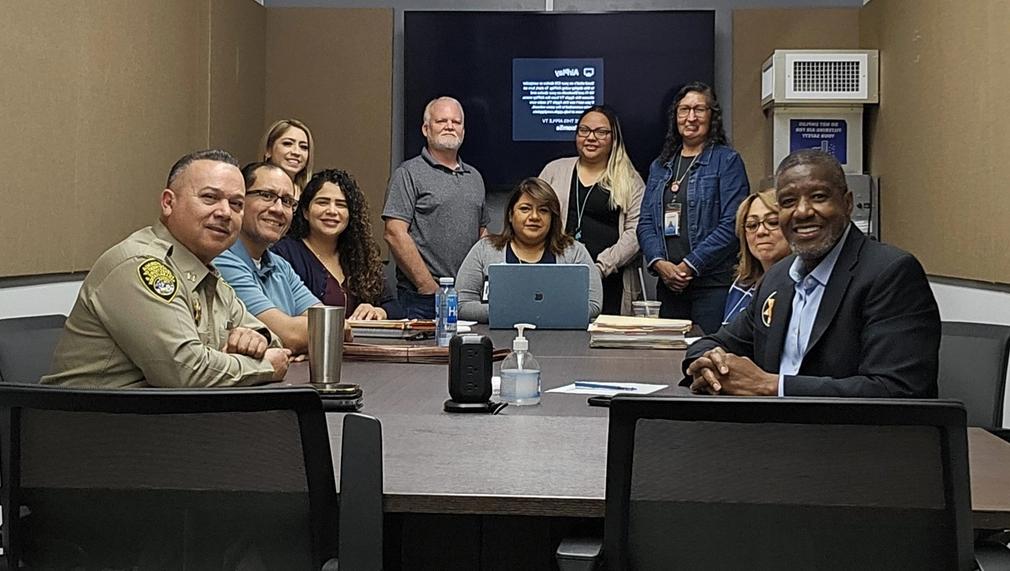CTD and SARBS-Partnering to Pause the School to Prison Pipeline
Continuing the Dream (CTD) disrupts the school‑to‑prison pipeline by keeping multi‑risk K‑12 students engaged in school, equipping them with life‑affirming skills, and surrounding them with a restorative support network. In partnership with School Attendance Review Boards (SARBs), 17 public‑school districts, and the California Department of Corrections & Rehabilitation, CTD leverages the lived experience of retired correctional officers to mentor youth, involve families, and ensure every student has the opportunity to graduate and thrive.

What is the primary issue area that your application will impact?
Community safety
In which areas of Los Angeles will you be directly working?
County of Los Angeles (select only if your project has a countywide benefit)
In what stage of innovation is this project, program, or initiative?
Expand existing project, program, or initiative (expanding and continuing ongoing, successful work)
What is your understanding of the issue that you are seeking to address?
The school-to-prison pipeline starts with chronic absenteeism and zero-tolerance discipline that push students—especially Black, Latino, foster-youth, and low-income—out of class and toward arrest. LA County issued 45,000+ suspensions in 2023; campus arrests climbed 27 %, yet 80 % involved non-violent behavior that reflects unmet needs, not crime. Each suspension triples dropout risk, cuts lifetime earnings, and strains county resources. Evidence shows early restorative action with family support reverses this trajectory, but schools lack coordination bandwidth. CTD treats absence and misbehavior as distress flares: staff embedded on School Attendance Review Boards convene restorative circles within 48 hours and link families to transport, food, counseling, and mentoring—addressing poverty, trauma, and instability so youth stay in class, graduate, and build a safer, stronger LA County.
Describe the project, program, or initiative this grant will support to address the issue.
CTD will transform six chronically challenged middle / high schools into proof-of-concept “healing campuses.” Each site gains a full-time CTD Success Coordinator who sits on the School Attendance Review Board (SARB), scans weekly attendance-and-discipline data, and flags any student after two absences or a first suspension. Within 48 hours the Coordinator convenes a Restorative Circle that unites the student, family, teachers, and a trained community mentor to uncover root causes—transport gaps, unstable housing, trauma—and craft a Success Plan.
That plan unlocks a menu of wrap-around supports delivered by twelve partner nonprofits: unlimited bus rides, on-campus counseling, evening tutoring, food boxes, and caregiver legal navigation. Mentors meet students twice weekly on campus and maintain daily text contact until attendance stabilizes for 30 straight days.
To shift adult behavior, the project offers quarterly institutes in culturally responsive, trauma-informed practice and coaches principals to use disaggregated data to spot disproportionality. A real-time dashboard tracks attendance, suspensions, citations, GPA, and mentor minutes; results feed to the County Office of Education to inform broader policy.
Year-one targets —400 youth served, +10-point attendance gain, 25 % suspension drop, 40 % cut in campus police referrals, and a published replication guide ready for the county’s 80 other high-needs schools.
Describe how Los Angeles County will be different if your work is successful.
Within five years of CTD’s expansion, LA County classrooms will be full and courtrooms emptier. Graduation rates climb past 93 %, suspensions are cut in half, and campus police referrals fall 40 %. Thousands of Black and Brown students once tracked toward juvenile court instead earn diplomas, closing long-standing racial gaps. Restorative-justice hubs and wrap-around services turn every school into a center of healing, saving millions in lost earnings and public-safety costs. Families feel safer, neighborhoods thrive, and the nation’s largest county becomes California’s model for replacing the school-to-prison pipeline with a pathway to purpose.
Approximately how many people will be impacted by this project, program, or initiative?
Direct Impact: 760
Indirect Impact: 10,000